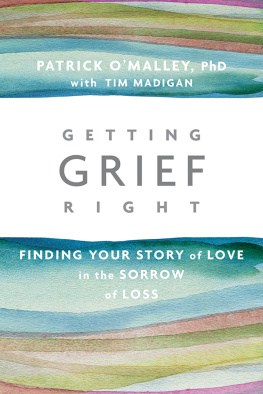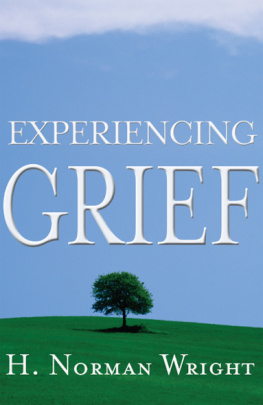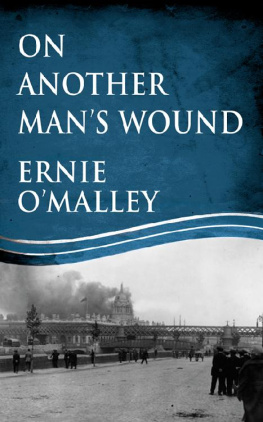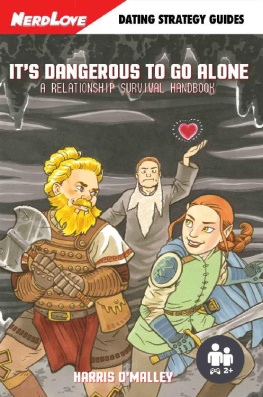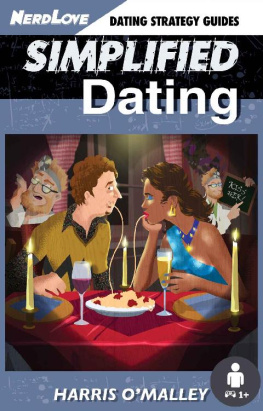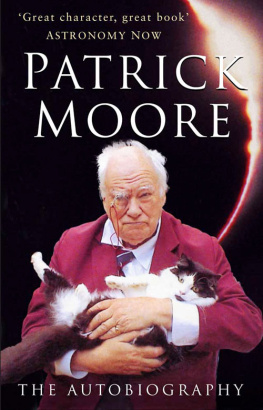Patrick O’Malley - Getting Grief Right
Here you can read online Patrick O’Malley - Getting Grief Right full text of the book (entire story) in english for free. Download pdf and epub, get meaning, cover and reviews about this ebook. publisher: Sounds True, genre: Art. Description of the work, (preface) as well as reviews are available. Best literature library LitArk.com created for fans of good reading and offers a wide selection of genres:
Romance novel
Science fiction
Adventure
Detective
Science
History
Home and family
Prose
Art
Politics
Computer
Non-fiction
Religion
Business
Children
Humor
Choose a favorite category and find really read worthwhile books. Enjoy immersion in the world of imagination, feel the emotions of the characters or learn something new for yourself, make an fascinating discovery.
- Book:Getting Grief Right
- Author:
- Publisher:Sounds True
- Genre:
- Rating:5 / 5
- Favourites:Add to favourites
- Your mark:
- 100
- 1
- 2
- 3
- 4
- 5
Getting Grief Right: summary, description and annotation
We offer to read an annotation, description, summary or preface (depends on what the author of the book "Getting Grief Right" wrote himself). If you haven't found the necessary information about the book — write in the comments, we will try to find it.
Getting Grief Right — read online for free the complete book (whole text) full work
Below is the text of the book, divided by pages. System saving the place of the last page read, allows you to conveniently read the book "Getting Grief Right" online for free, without having to search again every time where you left off. Put a bookmark, and you can go to the page where you finished reading at any time.
Font size:
Interval:
Bookmark:

For Nancy, my beloved partner for life.
And in memory of our son, Ryan Palmer OMalley.

For Catherine from Tim: I am because we are.
CONTENTS
Introduction
WHATS WRONG WITH ME?
W hen Mary first sat down in my office, six months after losing her daughter to sudden infant death syndrome, she had already hired and fired two other therapists. The bereaved mother was clearly trying to get her grief right.
A successful businesswoman in her thirties, she was unaccustomed to the weight of sorrow; she was an up person who could cheerfully handle almost anything that came her way. Mary was proud of that persona and worked hard to maintain it, even in the face of such a wrenching tragedy. Within a few days of her daughters death, Mary was back at work, seeming to function largely as before. She was gracious when coworkers offered condolences but quickly insisted on turning conversations back to the task at hand. She said she was doing fine. Indeed, she seemed to have moved on, so convincing was the mask that she put on for the world each day.
The truth was another matter, as became increasingly undeniable to her and those around her. The effort to maintain the positive veneer sapped more and more of her energy. She started making uncharacteristic mistakes at work and found herself being short and overly critical with her employees.
I really need to get back to my old self, she told me the day in the late 1990s when we met. You would think I would be at least a little closer to that by now. Im totally exhausted. I dont know how much longer I can keep this up. I hope you can help me.
Mary was by then fully acquainted with the five stages of grief that famous gospel of mourning based on psychiatrist Elisabeth Kbler-Rosss 1969 book, On Death and Dying. Like the typical grieving person (then and now), Mary expected that the pain of loss would proceed through the stages of denial, anger, bargaining, depression, and finally, acceptance. The gospel also implied that an emotionally healthy person should grieve only so deeply and for only so long. For Mary, six months seemed like a reasonable amount of time.
But what if a persons mourning doesnt conform? When her sorrow lingered beyond the accepted norms, Mary felt that she had broken the rules somehow. That was why she and so many other clients had sought me out as a therapist not only because of their heartbreak, but also because they felt they could not get their grief right.
In our first visit, Mary insisted that she was stuck in depression, which, in her mind, was keeping her from achieving acceptance and closure. Her questions were straight out of the Kbler-Ross theory: Am I in denial? Am I angry enough?
A few years earlier, I would have wondered those things myself and reviewed the stages, as Mary clearly had, looking for the stage where her grief work remained incomplete. I also would have zeroed in on her suspected depression. Was there a family history? Had she been depressed before? Were the antidepressants helping? Did she suffer from a chronic mental illness, or was her depression temporary and situational?
But by the time we met, I had begun to approach grief in a much different way. I was a grieving person myself, and I understood too well what Mary was going through. In the previous decade, I had traveled a dark road similar to hers: I had mourned the tragic loss of my own baby son. I had been a young therapist who had tried desperately to get my grief right. I had felt stuck in my mourning and had asked myself many of the same questions that Mary asked herself. I could relate to the confusion and the nagging sense of inadequacy when my suffering did not conform to the orthodoxy. I knew the exhaustion of pretending. I knew the loneliness and isolation when the support of others began to fade while my pain did not.
It was in the course of that excruciating journey, and thanks largely to the unique privilege of spending thousands of hours with bereaved clients like Mary, that I came upon a new understanding of grief and grievers and learned the life-changing lessons that are the heart of this book. I began to understand why grief defied categorization, and I saw the fallacy of thinking that grief occurs in a predictable, linear way, one stage after another, until resolution is achieved.
I was steadily drawn to another way of understanding and even embracing the experience of mourning through the narrative of grief. It might sound simplistic, but I discovered that our stories were indeed the pathway to living with loss.
All sorrows can be borne if you put them in a story or tell a story about them, author Isak Dinesen once said. This book is an invitation for you to do just that.
In the pages to come, I will help you both create and more deeply explore your story of grief. To help guide and inspire you, I will share my story and the stories Ive heard from clients over the years. In fact, as you read, try imagining yourself in Marys place, sitting across from me in my office. In that safe and nonjudgmental space, you will be free not only to tell the story of the one you lost but also to feel whatever previously stifled emotions might arise. You will unearth memories and feelings that you might not have come across otherwise. You will stop analyzing your grief and begin to honor your story of loss and to live it.
Indeed, I want to make clear at the outset that this book offers no promise that grief will end. I understand as well as anyone why we would wish that to be true. Mourning is painful. But its unreasonable to think that parents who have lost a child or a person who has lost a loved one to suicide or a spouse who has lost a partner of fifty years wont grieve, to one extent or another, for the rest of their lives.
The writer Anne Lamott said it beautifully: If you havent already, you will lose someone you cant live without, and your heart will be badly broken, and you never completely get over the loss of a deeply beloved person. But this is also good news. The person lives forever, in your broken heart that doesnt seal back up. And you come through, and you learn to dance with the banged-up heart.
This book and your own narrative of grief will help you learn to dance that is, to move beyond the cruel but pervasive misconceptions into a larger truth. In the process of remembering, embracing, and sharing your own story, you will be liberated from the expectations of society and your own self-diagnosis and self-criticism about whether you are grieving correctly. This book will not help you get over your grief, but it will help you experience your sorrow in its purest form.
Your narrative of grief will help you more deeply understand your relationship to the one you lost and will, in turn, help you understand the pain you feel now.
Your narrative of grief might actually allow you to deepen your connection to the deceased.
This courageous exercise of feeling and remembering will help you become a more authentic, wise, and compassionate human being who will be better able to support others who mourn.
Getting Grief Right is written not only for those who grieve but also for those who seek to better support bereaved people in their lives but who do not yet have the knowledge to do so. To that end, I offer specific guidance that will allow you to go beyond the painful awkwardness and empty clichs and to be with a grieving person in ways that truly make a difference.
Few things could be more important than learning how to live with our sorrow and to support others who are bereaved. One thing is certain: grief is inevitable and inescapable. If we love, we will also grieve.
Next pageFont size:
Interval:
Bookmark:
Similar books «Getting Grief Right»
Look at similar books to Getting Grief Right. We have selected literature similar in name and meaning in the hope of providing readers with more options to find new, interesting, not yet read works.
Discussion, reviews of the book Getting Grief Right and just readers' own opinions. Leave your comments, write what you think about the work, its meaning or the main characters. Specify what exactly you liked and what you didn't like, and why you think so.

